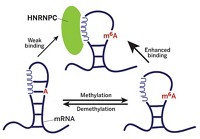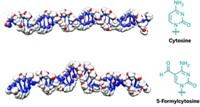Advertisement
Grab your lab coat. Let's get started
Welcome!
Welcome!
Create an account below to get 6 C&EN articles per month, receive newsletters and more - all free.
It seems this is your first time logging in online. Please enter the following information to continue.
As an ACS member you automatically get access to this site. All we need is few more details to create your reading experience.
Not you? Sign in with a different account.
Not you? Sign in with a different account.
ERROR 1
ERROR 1
ERROR 2
ERROR 2
ERROR 2
ERROR 2
ERROR 2
Password and Confirm password must match.
If you have an ACS member number, please enter it here so we can link this account to your membership. (optional)
ERROR 2
ACS values your privacy. By submitting your information, you are gaining access to C&EN and subscribing to our weekly newsletter. We use the information you provide to make your reading experience better, and we will never sell your data to third party members.
Biological Chemistry
RNA Editing Enhances DNA Repair
Researchers discover a reaction that may play a role in repairing DNA damaged by an inflammatory response
by Jyllian N. Kemsley
November 15, 2010
| A version of this story appeared in
Volume 88, Issue 46
Researchers at the University of California, Davis, have found an RNA-editing reaction that may play a role in repairing DNA damaged by an inflammatory response (Proc. Natl. Acad. Sci. USA, DOI: 10.1073/pnas.1009231107). RNA-editing reactions can alter nucleotides and change the protein-coding properties of RNA molecules, and they are known to alter the function of some nervous system proteins. Sheila S. David, Peter A. Beal, and colleagues investigated the DNA repair enzyme NEIL1, which initiates repair of oxidized DNA bases. When an adenosine in NEIL1 messenger RNA gets deaminated to form inosine, the mRNA is subsequently translated to place an arginine instead of a lysine in the portion of NEIL1 that recognizes oxidized DNA bases. The amino acid switch affects which DNA lesions NEIL1 preferentially recognizes and the enzyme’s activity in excising oxidized bases. Because production of the RNA deamination enzyme is induced by an inflammatory response, the researchers propose that editing of the mRNA of NEIL1 may be a way that cells provide themselves with a broader range of DNA repair in response to the oxidative stress of inflammation.





Join the conversation
Contact the reporter
Submit a Letter to the Editor for publication
Engage with us on Twitter